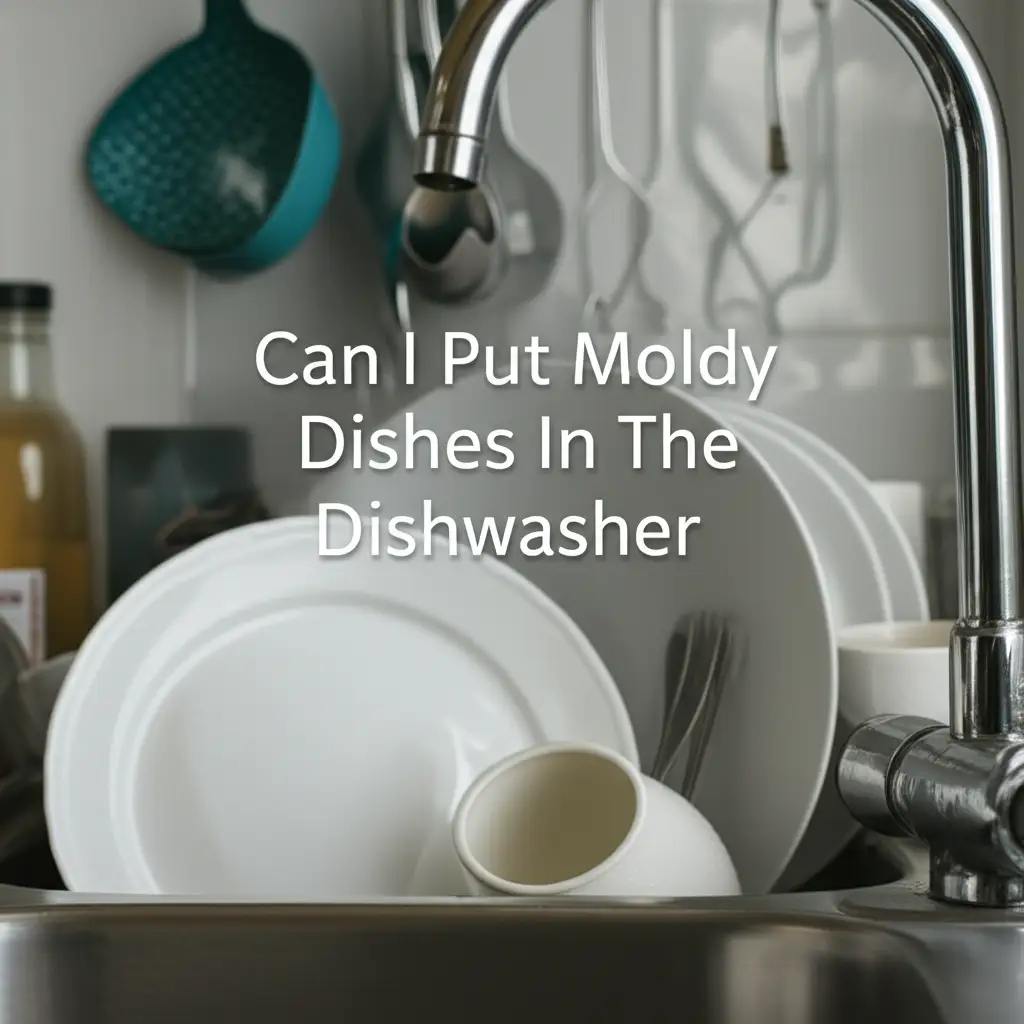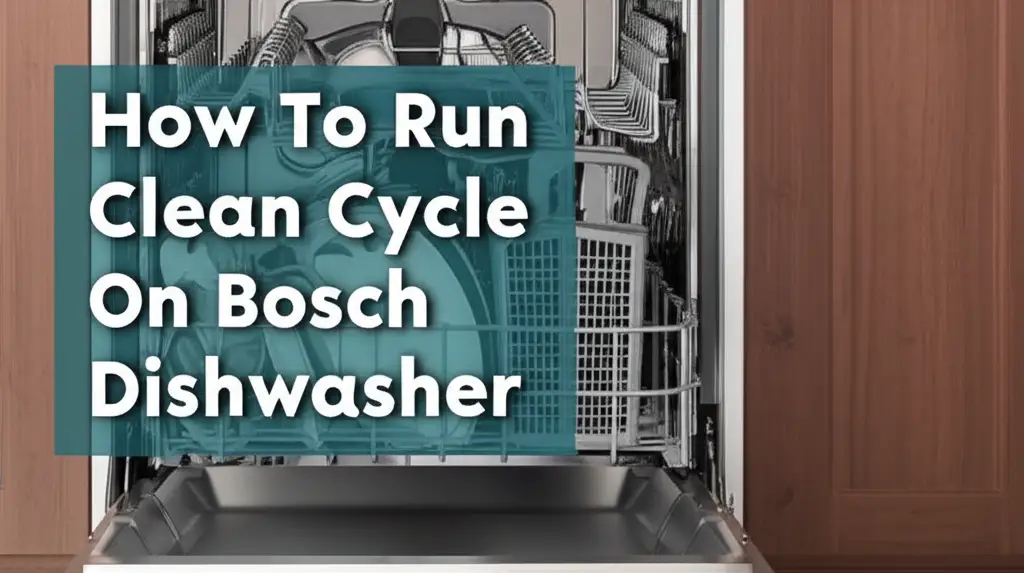· Liora Benning · Home Cleaning · 13 min read
Can I Put Moldy Dishes In The Dishwasher

Cleaning Moldy Dishes: Can Your Dishwasher Handle It?
Imagine finding a forgotten plate in the sink, covered in fuzzy, colorful mold. It is a common, unpleasant discovery. Your immediate thought might be, “Can I put moldy dishes in the dishwasher?” This question brings up concerns about hygiene, health, and even appliance safety. You want to make sure your dishes are truly clean, and that your dishwasher stays clean too.
This article answers that question directly. We will explore the truth about washing moldy dishes. We will cover the risks mold poses and how your dishwasher can help. You will learn the best ways to prepare moldy items for washing. We will also look at how to keep mold from growing back. Get ready to turn those moldy horrors into sparkling clean kitchenware!
Takeaway
- Pre-Scrape Mold: Remove visible mold growth before loading dishes into the dishwasher.
- Use Hot Water Cycles: Choose a hot wash or sanitize cycle to kill mold spores effectively.
- Clean Your Dishwasher: Run a cleaning cycle after washing moldy items to prevent cross-contamination.
- Ensure Proper Drying: Make sure dishes and the dishwasher dry completely after each use to stop mold growth.
- Prevent Future Mold: Wash dishes promptly and store food properly to avoid mold returning.
The short answer is yes, you can put moldy dishes in the dishwasher, but with important steps. You must pre-treat heavily moldy items first. Your dishwasher’s hot water and detergent can kill mold spores. However, you need to clean the dishwasher after to avoid spreading mold.
The Truth About Moldy Dishes and Your Dishwasher
You have likely faced the challenge of a forgotten dish, now covered in mold. This is a common sight in busy homes. The big question is always, “Can I put moldy dishes in the dishwasher directly?” Many people wonder if their appliance can truly handle such a mess. Let me tell you, your dishwasher is a powerful cleaning tool, but it has limits.
Dishwashers use hot water and strong detergents. These elements are good at breaking down food and killing germs. Most common household molds, like those found on forgotten food, do not survive high temperatures. A hot wash cycle, especially one with a sanitize option, can be effective. This heat denatures proteins in the mold, killing it. However, the mold spores might still remain, causing future problems.
Putting dishes with heavy mold growth straight into the machine is not ideal. Large chunks of mold could clog your dishwasher’s filter. This can cause poor cleaning results or even damage. Mold spores can also spread inside the appliance during the wash cycle. This might lead to mold growing in hidden areas of your dishwasher. It means your dishwasher could become a source of future contamination. You definitely do not want that. For best results, a little pre-work goes a long way. This ensures your dishes get clean and your appliance stays safe.
Health Risks of Dish Mold and Cross-Contamination
Finding mold on your dishes is more than just an unsightly problem. It also presents actual health risks. Mold is a type of fungus that grows on organic matter, including leftover food. These fungi produce spores, which are tiny, airborne particles. When you disturb moldy dishes, these spores can become airborne. This means they can spread through your kitchen.
Breathing in mold spores can cause problems for some people. Common reactions include allergic responses, like sneezing, runny nose, and itchy eyes. People with asthma might experience worsened symptoms. Even those without allergies can develop respiratory irritation from mold exposure. My family and I always make sure to be careful around mold. We know it is better to prevent issues than deal with them later.
Cross-contamination is another serious concern. If mold spores spread from a dish to your dishwasher, they can land on other items. This includes clean dishes or the interior surfaces of your appliance. The spores might then grow in warm, damp spots. This creates a cycle of contamination. If your dishwasher smells bad, mold could be the cause. Learn how to get rid of smelly dishes from dishwasher to address this issue.
Cleaning heavily moldy dishes needs special care. Simply rinsing them under cold water might spread spores more. The goal is to contain and remove the mold effectively. This protects your health and keeps your kitchen clean. Ignoring mold could lead to ongoing problems. Therefore, a proactive approach is always the best way to handle moldy dishes.
Preparing Moldy Dishes for the Dishwasher: A Step-by-Step Guide
Proper preparation is the most important step for moldy dishes. Do not just throw them into the dishwasher. A little effort beforehand saves you from bigger problems later. This process ensures effective cleaning. It also protects your dishwasher and your family’s health.
Manual Pre-Treatment
First, you need to remove the bulk of the mold. I always do this carefully. Take the moldy dish to the sink. Using a paper towel or a stiff brush, gently scrape off as much visible mold as you can. Do this over a trash can or directly into the drain with running water. This prevents spores from spreading throughout your kitchen. Avoid breathing in the spores directly. You might even wear gloves for this part. After scraping, quickly rinse the dish under hot water. This washes away any remaining loose mold particles. This step is critical because large pieces of mold can clog your dishwasher’s spray arms or filter.
Loading Your Dishwasher
Once the initial mold is removed, the dishes are ready for the dishwasher. Load them as you normally would. Make sure dishes do not overlap. Proper loading ensures water and detergent reach all surfaces. This is important for a thorough clean. Use your regular, high-quality dishwasher detergent. Check how much dishwasher powder to use to ensure you are using enough for a strong cleaning action. For mold, a stronger dose within the recommended limits can be helpful.
Choosing the Right Cycle
Select a wash cycle with the highest temperature setting. Most dishwashers have a “Sanitize” cycle. This cycle uses extra hot water, often reaching 150-160°F (65-71°C), for an extended period. This high heat is very effective at killing mold spores and bacteria. If your dishwasher does not have a sanitize cycle, choose the “Heavy Duty” or “Pots and Pans” cycle. These cycles typically use hotter water and longer wash times. This provides a better chance of eliminating mold. Remember, heat is your best friend when fighting mold.
The Dishwasher’s Role in Eliminating Mold Spores
Your dishwasher is more than just a convenience. It is a powerful cleaning machine. It plays a key role in eliminating mold spores from your dishes. Understanding how it works gives you confidence in its cleaning ability. I trust my dishwasher to handle tough jobs, and it usually does.
The primary weapon against mold in your dishwasher is high heat. Mold and bacteria cannot survive very hot temperatures. Most standard dishwashers reach temperatures of 120-140°F (49-60°C) during their main wash cycle. Sanitize cycles go even hotter, often up to 150-160°F (65-71°C). At these temperatures, mold cells break down. The heat kills mold spores effectively. This is why pre-rinsing is important, but the high heat is what truly sanitizes.
Detergents also play an important part. Dishwasher detergents contain powerful cleaning agents. These agents break down organic matter, including mold and food residues. Some detergents even have enzymes that target specific organic compounds. They work with the hot water to loosen and wash away mold particles. The strong water jets also help to physically blast away any clinging mold. This combination of heat, detergent, and water pressure is very effective. It ensures that your dishes come out clean and sanitized. For an extra boost, some people use a little vinegar. Learn where to put vinegar in dishwasher to clean if you want to try this method. This helps with mold and odors.
After the wash, the rinse cycle washes away any remaining detergent and loosened debris. The heated dry cycle helps to evaporate moisture. This prevents new mold from growing on the freshly cleaned dishes. It is a complete process designed for hygiene. Your dishwasher, when used correctly, is an excellent tool for dealing with moldy dishes.
Post-Wash Care: Ensuring a Truly Clean Kitchen
After your dishwasher finishes a cycle with moldy dishes, your job is not entirely done. Proper post-wash care is vital. This ensures your dishes are truly clean. It also prevents mold from settling into your appliance. My routine always includes these steps. This way, I know everything is clean and safe.
First, check your dishes. Once the cycle finishes and the dishes cool, inspect them carefully. Look for any remaining mold residue or stains. While rare after a hot wash, sometimes stubborn spots might cling on. If you find any, hand wash those specific items immediately with hot, soapy water. Ensure they are spotless before putting them away. This step is about confirming the cleaning was effective.
Second, clean your dishwasher itself. Washing moldy dishes can leave spores inside the appliance. These spores can find damp, hidden spots to grow. This is why cleaning your dishwasher after such a load is important. You should run an empty cycle using a dishwasher cleaner or a cup of white vinegar. This helps sanitize the interior. It also flushes out any stray mold spores. Regularly cleaning your dishwasher is a good practice anyway. Learn how to clean mold off dishwasher for detailed instructions on keeping your appliance sparkling.
Finally, ensure proper drying for both dishes and the dishwasher. Mold thrives in damp environments. Make sure your dishes are completely dry before you store them. If your dishwasher has a heated dry cycle, use it. If not, open the dishwasher door after the cycle. Let the dishes air dry completely. Also, wipe down the interior of your dishwasher. Pay attention to seals and crevices. This removes moisture. This stops mold from growing inside the appliance. If your dishwasher is not drying dishes properly, that is a problem you need to fix to prevent mold. By following these steps, you will keep your kitchen genuinely clean and mold-free.
Preventing Mold Growth: Best Practices for Kitchen Hygiene
Preventing mold is always better than cleaning it. Good kitchen hygiene helps keep your dishes and your home mold-free. It takes a little effort, but it saves a lot of hassle. I follow these simple rules in my own kitchen to avoid mold problems.
First, wash dishes promptly. Do not leave dirty dishes sitting in the sink or on countertops for long periods. Food residue and moisture create a perfect breeding ground for mold. If you cannot wash dishes immediately, at least rinse them off. This removes most of the food particles. This simple action can drastically reduce mold growth. My rule is: if it is dirty, it gets rinsed or washed right away.
Second, ensure proper food storage. Mold on dishes often comes from moldy food. Store leftovers in airtight containers in the refrigerator. Eat or discard perishable foods before they spoil. Check fruits and vegetables regularly. Throw out anything showing signs of mold. This prevents mold spores from spreading to your dishes. A clean fridge and pantry are crucial for preventing mold.
Third, ensure good air circulation. Mold loves stagnant, humid air. Open windows or use an exhaust fan when cooking. This reduces moisture in the air. Allow dishes to air dry thoroughly before putting them away. Do not stack wet dishes. This traps moisture, which leads to mold. Sometimes, just opening the dishwasher door after a cycle helps a lot.
Fourth, clean your dishwasher regularly. Even if you pre-rinse, food particles and moisture can build up inside your appliance. This creates an environment where mold can grow. Clean your dishwasher’s filter often. This removes trapped food debris. You should also run a cleaning cycle every month or so. This helps sanitize the interior. Knowing how often should you clean your dishwasher filter is key to keeping your appliance clean and mold-free. Regular maintenance keeps your dishwasher efficient and free of unwanted mold.
FAQ Section
Q: Will mold damage my dishwasher?
A: Heavily moldy dishes can clog your dishwasher’s filter or spray arms. This can reduce cleaning performance. While mold itself usually won’t damage the machine’s parts, ignoring it can lead to bad smells. It also causes mold to grow inside the appliance. Regular cleaning after washing moldy items helps prevent damage and maintains efficiency.
Q: What if I didn’t pre-rinse heavily moldy dishes?
A: If you loaded heavily moldy dishes without pre-rinsing, mold pieces might clog your dishwasher filter. They might also spread inside the machine. After the cycle, check your dishes for remaining mold. Then, immediately run a cleaning cycle on your empty dishwasher to sanitize it. Clean the filter well.
Q: Can mold grow inside my dishwasher?
A: Yes, mold can grow inside your dishwasher. It thrives in dark, damp areas, like around door seals, the filter, or spray arms. Food debris trapped inside can feed mold. Regular cleaning with a dishwasher cleaner or vinegar helps prevent this growth. Always ensure good ventilation after a wash.
Q: Is it safe to eat off dishes that had mold after dishwashing?
A: After a hot wash cycle, especially a sanitize cycle, your dishwasher kills most mold and bacteria. If dishes come out visibly clean and without any mold residue or smell, they are safe to use. If any mold remains, do not use the dish. Wash it by hand with hot, soapy water first.
Q: What’s the best detergent for moldy dishes?
A: Use your regular high-quality dishwasher detergent. These detergents contain strong cleaning agents that work with hot water. For heavily soiled or moldy dishes, ensure you use the recommended amount of detergent. Some people add a boost, like white vinegar during the rinse cycle, for extra sanitizing.
Q: How quickly does mold grow on dishes?
A: Mold can begin to grow surprisingly fast, often within 24 to 48 hours. This happens if dishes are left with food residue in a warm, moist environment. The speed depends on the type of food, temperature, and humidity. Prompt washing or rinsing is essential to stop mold growth.
Conclusion
So, can you put moldy dishes in the dishwasher? The answer is clear: yes, with the right approach. While your dishwasher is a powerful tool, it needs your help. Pre-treating heavily moldy dishes prevents clogs and reduces immediate spread. Using hot water and sanitize cycles helps kill mold effectively. Most importantly, cleaning your dishwasher after handling moldy items is a critical step. This prevents mold from making a new home inside your appliance.
Remember, good habits are your best defense. Wash dishes quickly. Store food properly. Ensure good air circulation. Regularly clean your dishwasher. These simple actions keep your kitchen clean and your family healthy. By following these guidelines, you can tackle mold on dishes with confidence. Your kitchen will stay a clean, safe space for everyone. Start today, and make mold a problem of the past!
- moldy dishes dishwasher
- dishwasher mold
- cleaning moldy dishes
- dishwasher safety
- kitchen hygiene
- mold prevention
- dish care
- appliance cleaning





